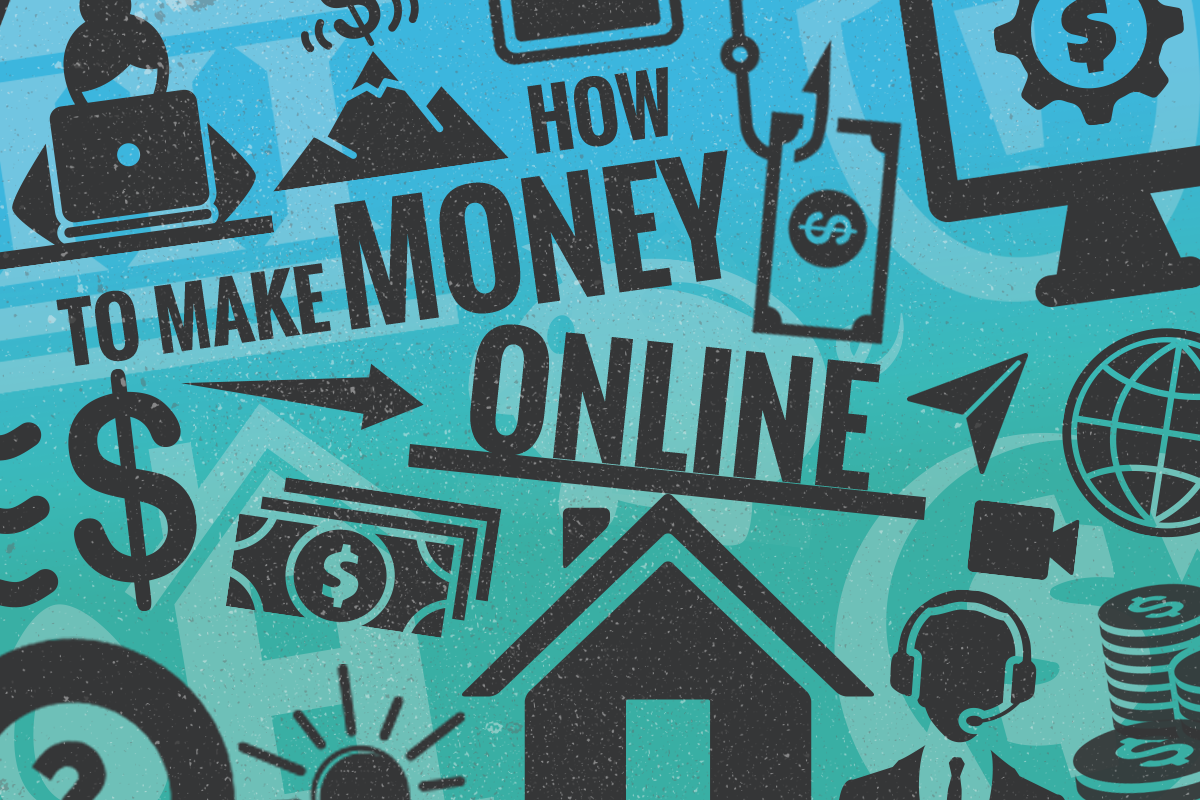
Starting a blog is one of the best ways to make money online. Although it may take a while to build up traffic, it’s possible to earn up to $50,000/year through blogging with enough hard work.
When it comes to the most effective methods on how to monetize a blog, it all depends on your blogging niche and audience type. It may take a while to figure out which method works best for you, but with enough persistence, you will be able to make a substantial income.
In this article, you will find all of the information to become a blogger and make money. We will show you 11 ways to make money blogging for beginners and guide you through the process of creating a blog that is set to grow.
11 Ways to Make Money as a Blogger
Now that we covered the benefits of blogging, it’s time to see the 11 methods that can help you start making money off of your blog.
1. Affiliate Marketing
Affiliate marketing is one of the fastest ways to make money blogging. Many people choose this method because:
- Affiliate marketing is a profitable and large industry, making it easy to find products to use and promote. It is a great side hustle that lets bloggers earn passive income.
- It is a low-cost business opportunity that doesn’t require a huge starting capital.
- Provides the opportunity to promote products from different companies.
Many bloggers make thousands of dollars from affiliate marketing. A good example is Pat Flynn, the creator of Smart Passive Income, who earned over $100,000 in a month through affiliate links.
To get started with this method, a blogger needs to join an affiliate program. Some of the popular networks to find affiliate programs include FlexOffers, ClickBank, and ShareASale.
After being approved for an affiliate program, bloggers will get an affiliate link to the product’s sales page. They can add this link to their content and receive a commission once a visitor makes a purchase.
The commissions will depend on the affiliate programs that bloggers choose, ranging from 5-30% of the product sales price. The higher the affiliate products’ prices are, the higher the commissions they can receive.
If you want to make money using affiliate marketing, consider following these tips:
- Choose an affiliate program that suits your audience. Most successful affiliates promote products that their readers would be interested in.
- Pay attention to the competitors. Look at the top blogs in your affiliate niche, then see what products they recommend and how they promote those items.
- Disguise affiliate links. Use affiliate tools like Pretty Links to make the links look more professional and easier to remember.
Expert Tip
Make sure you have five, ten thousand plus visitors a month before you worry about monetizing through AdSense or affiliate marketing. The more you blend the affiliate link in, the more natural it seems, the better off you’re gonna do. But of course, if it’s affiliate-related, you need the disclaimers as well.
2. Paid Ads
Another great way to blog and make money is to sell ad space on your blog. Single Moms Income is a great example of a blog that earns passive income by displaying ads. It generated $1,031.81/month in 2019 through ad placements alone.
There are many ad networks to get started with, but Google Adsense is one of the most popular services.
Some of the reasons why many bloggers use Google Adsense are:
- It’s free to join.
- A blogger can run ads on several websites from one AdSense account.
- Bloggers can modify the ads to fit their site’s design.
Before making money online with Google AdSense, you will need to create a Google account and submit an application. Google’s team will review your site before accepting the request, which might take from a few hours to a couple of days.
If the team doesn’t approve your Google AdSense account, try other alternatives such as Media.net, PopAds, and Chitika.
Here are several tips for maximizing paid ads revenue:
- Know the advertising program’s rules. You must read and comply with a program’s ads policies.
- Use organic traffic-building techniques. Most ad networks forbid web owners to click on their own ads or pay people for clicks. Try to drive organic traffic using such marketing practices as search engine optimization (SEO).
- Test different ad types and placements. Look for ad space sizes that generate the most amount of clicks and sales.
3. Online Consulting
If you’re an expert in a specific industry and willing to share your knowledge, then consulting might be the best way to make money online from a blog. Depending on your field of expertise, it’s possible to make up to $90,000/year as a consultant.
One example of a blogger who earns income by offering a consulting service is Neil Patel. He makes $20,000/month as an SEO consultant.
A consultant is usually expected to:
- Identify problems. Many clients look for a consultant to recognize a problem inside an organization and offer a more effective strategy.
- Act as a catalyst. A consultant can make changes in an organization without worrying about a corporation’s culture or other issues that can get in the way.
- Teach. Companies might also ask a consultant to teach their employees different skills to stay competitive in the industry.
There is no startup investment to get started as a consultant. Simply create a page with a contact form for clients who want to know more about your business. To find some consulting opportunities, you can also go to sites like Glassdoor and FlexJobs.

Keep in mind that there are some points to consider before starting with this method of making money online:
- Registrations and licenses. Some states might require people to have a special certification before starting to operate as a consultant.
- Consultant rates. Price is a significant factor that can attract and retain clients. Ensure to check how much other consultants in your industry are charging before setting rates.
- Special training. Consulting requires additional skills such as public speaking, training groups of people, offering feedback effectively, and analyzing and presenting data.
4. Sponsored Posts
Another excellent method to blog and make money is through sponsorships. Many bloggers make a high income by publishing product reviews on various items and services.
Through sponsored posts, a blogger can get paid to talk about brands or products they love, showing how they use these items and how they can benefit others.
A blogger can charge a set price per review, depending on their rank and incoming traffic. For instance, Alexis charges between $750-$1,500 for each sponsored post she publishes on her blog Fitnancials.
If you want to get paid by writing sponsored posts, try following these tips :
- Create a media kit that contains information like your blog’s traffic stats, audience demographics, and any other data that can make your site more appealing to other brands.
- Reach out to companies that you’re interested in working with.
- Remember to regularly update your media kit stats, especially if there are changes in page views or follower count.
- Create accounts on websites specifically for sponsorship opportunities such as Acorn Influence, Blog Meets Brand, and Social Stars.
Expert Tip
When it comes to different brands, they want to work with people who have loyal audiences that trust them and who care for their audiences. So just foster a really good relationship with the audience.
Reply to comments, go live on the social web. That way, you’re building a deeper connection with people.
5. Online Courses
For those who have experience in teaching, selling courses may be a good way to make money online.
Here are some reasons why a blogger might consider selling online courses:
- Scale the business. A chance to go from teaching only a few people in a class to hundreds of students worldwide.
- Increase income. There is no limitation on how many people can join an online course. The more students attend the course, the more money can be made.
- Reclaim time and freedom. Another great thing about online courses is that teachers won’t necessarily need to be present after setting up their courses.
Ryan Robinson is a blogger that earned over $2,000/month in 2020 just from selling a course that teaches people how to start a blog and grow a profitable side business.
Here’s what you’ll need to start selling online courses:
- Presentation software
- Screen recording app
- Webcam
- Microphone
Many bloggers use platforms such as Udemy, Skillshare, and Coursera to create and sell online courses.
If you want to make money from a blog with WordPress by selling an online course, try using plugins like LearnDash and AccessAlly.
Other than that, here is some advice on creating and selling online courses:
- Incorporate interactive elements. Use animation, games, images, or audio to make the course more engaging.
- Build a relationship with clients. Knowing how to connect with potential and current clients can increase the chances of them purchasing the online courses.
- Add a pop-up to a blog. Encourage visitors to buy the course by adding a pop-up with a discount message.
6. Guest Blogging
If you’re trying to figure out how to make money blogging and get more exposure online at the same time, writing for other websites might be an excellent choice. A guest blogger can earn from $50 to $300 for a post.
One of the bloggers that make money from guest blogging is Elna Cain. She was able to replace her full-time salary by working as a freelance blogger for six months.
Besides helping to earn money online, guest blogging also allows people to show their expertise within the industry, especially if they write for trustworthy brands. As a result, this can grow traffic to their own blog, further increasing their credibility and conversion rates.
Here are a few tips on how to get started with guest blogging:
- Look for sites that accept guest posts in blog directories such as AllTop, Technorati, and Popurls.
- Pick websites or blogs with strong online authority and the target audience you want to reach.
- Pitching a post in a way that gets you the gig.
- Make a publisher want to work with you again by constantly delivering well-written guest posts on time.
7. Publish eBooks
Selling eBooks is a popular way for bloggers to make money from their blogs. Some good examples of blogs that make money from eBooks are Make a Living Writing and TheSheApproach.
With this monetization method, a blogger only needs to write an eBook once and start getting passive income for as long as they leave it up online. Those who have a significant amount of online content can also turn their blog posts into chapters of a book.
Aside from selling and promoting an eBook on a blog, consider publishing and selling it on Amazon’s Kindle Direct Publishing as well – the process is easy, fast, and free of charge.
However, keep in mind that the eBook’s content needs to be unique and useful. It must provide good value for money to gain popularity and bring in profit.
To make an eBook creation process easier, try to follow these tips:
- Before starting to write, figure out your target audience’s problem and try to solve it in your eBook.
- Use free eBook templates to structure and design your eBook with ease.
- Find an editor on sites like Reedsy and Ebook Launch to edit the eBook.
8. Sell Products
If you have some ideas for products you’d like to sell, consider adding an eCommerce store to your site. The active blog can be used to build customer trust and bring in organic traffic, while an online store can be what brings in the profit.
Adam Enfroy is an example of a blogger who made $1,221/month in 2020 by selling digital products on his website. His success came from knowing what his audience’s needs were and delivering products that met them.
To find trending products to sell online, go to sites like Think with Google and Trend Hunter.
Keep in mind that selling physical products requires you to decide on the business model. If you’ll buy the items from wholesalers, you’ll need storage space. If you’ll craft the items yourself, you might need a workshop.
Another alternative to selling physical products is to start dropshipping – this method lets a blogger sell items without handling the inventory or shipping the products.
For those looking for a more low-maintenance way to make money with blogging, selling digital products may be a better choice. Creating a digital product requires fewer starting costs and less production time.
Here are some examples of profitable digital products to sell:
- Photographs
- Worksheets
- Video tutorials
- Printable planners
To sell digital products online on a blog, try using eCommerce tools like WooCommerce and Easy Digital Downloads – they have all of the features needed to start a fully functional online store.
9. Create a Membership Site
Another way to monetize a blog is to turn it into a membership site, which only provides the content to subscribed visitors. This method works best for bloggers who already have a group of loyal fans that wouldn’t mind paying for access to new blog content.
Here are some advantages of starting a membership website:
- Steady income. Bloggers can generate recurring revenue since their members will pay a monthly or yearly fee to access their exclusive content.
- Build a loyal community. A membership site can be a great way to grow and retain loyal members.
- It can be automated. It’s possible to deliver content automatically on a membership site, making it an excellent passive income stream.
A good example is Ryan, the creator of Orchids Made Easy, who charges a monthly membership subscription for people to join his Green Thumb Club.
To create a membership site, try using tools such as MemberPress and Memberium.
Keep in mind that it requires effort and hard work to run a successful membership site – a blogger needs to publish premium blog content regularly, making sure it brings value for money.
The following tips can help you build a successful membership site:
- Interact with members. Try to engage with your audience by responding to their comments or conducting surveys.
- Run group activities. Develop events or competitions and give rewards to members who participate.
- Make a membership site easy to navigate. Help new members to find their way around by providing simple and intuitive navigation.
10. Speaking Gigs
If you wonder how to make money blogging using your public speaking skills, try using your blog as a place to promote your personal brand. As more people start to recognize you as an expert in an industry, utilize this opportunity to get some speaking gigs.
Some bloggers who are also making money as speakers are Katrina Cravy, Mel Robbins, and Tim Ferriss.
There are many benefits of being a public speaker, such as:
- Expand network. Speaking at events is an opportunity to connect with more people in an industry.
- Have an impact. Becoming a speaker gives you a chance to get deeper with a smaller audience and influence them.
- Get more speaking opportunities. Talking in front of your ideal target audience can open up more job opportunities, such as client coaching and consulting gigs.
My Speaking Agent is a site that offers a list of speaking events in various industries. It also provides contact information for each event and has over 1,000 different conferences, all categorized by date, size, and genre.
To make money as a public speaker, try these suggestions:
- Start by speaking at local events or conferences to promote your personal brand and practice your speaking skills.
- Brand yourself in color to make you more memorable to the audience.
- Provide a short, professional bio and a call-to-action in every article publication, allowing clients to reach out to you right away.
- Let people know that you are available by announcing it on a blog or privately reach out to event organizers.
11. Sell Services
If you want to know how to make money blogging without any investment, try selling freelance services. Starting a service-based business is more cost-effective to operate than selling products because there’s no inventory.
A few examples of service-based businesses include:
- Web development
- Home repair
- Creative services
- Personal care
Many bloggers make money by providing services, including Vincy, the creator of Phppot. She offers different services, from developing custom eCommerce websites to creating WordPress plugins and themes.
How much money a blogger makes depends on the type of service. For instance, a freelance writer can earn around $60,000/year.
To begin making money as a freelancer, create a high-quality portfolio and a “Hire Me” page on your blog. Doing so will help to attract potential clients that may want to work with you.
Also, create an account on Upwork and Toptal to get more freelance job opportunities and gain experience.
Here are more tips for selling services successfully:
- Add client reviews to the blog. Add social proof to your website, showing potential clients that you’re trusted. Previous customers’ feedback will also give you insights on how to improve your service.
- Learn how to pitch. A freelancer should be able to communicate their strengths and convert potential customers into paying clients.
- Maintain relationships. Try to maintain established client relationships by providing exceptional customer service.
How to Start a Profitable Blog Step-by-Step
There are many blogging platforms to make money online, but WordPress is one of the best options to start with. This CMS is easy to set up and comes with lots of flexibility for creating and modifying websites.
WordPress is also SEO-friendly, making it easier for your website to rank higher on search engines. Overall, this platform is an excellent choice for running a blog.
Here are the steps to make money blogging on WordPress:
1. Choose a Profitable Blog Topic
The first step of creating a blog is picking a niche – a selected topic that you’ll focus your content on.
Besides helping a blogger stay on track, having a blog niche also makes it easier to figure out your target audience.
Before settling on a niche, make sure to pick a topic you enjoy learning and talking about. A lot of bloggers stop blogging after a few months because they lose interest.
Also, make sure it’s a topic you have some knowledge about. Most readers go to blogs to learn something new, so you have to be able to teach them something.
To find a niche that you are passionate and experienced about, answer these questions and make a list:
- What are your hobbies?
- What topics do you know the most about?
- How do you spend your free time?
- What do you enjoy learning and reading about?
- What industries have you worked in?
Once you have a list of niches, try to write down ten blog post ideas for each topic. If coming up with ten posts feels challenging, then that niche may not be the best choice.
It’s crucial to choose a niche that you can write about for years and avoid topics that people tend to lose interest in. Try using Google Trends to know whether a topic is stable, rising in popularity, or decreasing over time.
Expert Tip
I would first stick with a subtopic then grow into a bigger, broader topic over time because when you cover a niche topic, you’re building a brand – an authority within that space.
Then you’ll be able to compete with the Wikipedias of the world, who are getting a lot of the social and search traffic. Once you build enough authority, you can expand into a broader topic.
Most importantly, make sure that it’s possible to make money from your niche. See if there are products or services aimed at your target readers by typing in related keywords into search engines.
Here is an example of Google search results if we type in the keyword “pet care”:
As you see, this is a keyword that people search for on a regular basis. This tells us that pet care is a topic that’s always in demand and can be monetized.
For those who are still not sure what topic to start with, here are some of the most popular blog niches to consider:
- Food
- Technology
- Fashion
- Travel
- Lifestyle
- Home decor
2. Register for Web Hosting
The next step to creating a WordPress blog is finding a hosting provider – a service that stores your website files online and makes it accessible on the internet.
There are a few aspects to consider when choosing a web hosting company, such as:
- Price – look for a web host that provides cost-effective starting plans, reasonable renewal prices and other website hosting costs. For a small website, you can even give a shot to free WordPress hosting services.
- Features – a hosting provider should include all of the necessities for running a website. Some essential tools include a one-click WordPress installer, DNS management, and file manager.
- User-friendly – a beginner should pick a hosting that comes with an intuitive control panel. Doing so will help you set up a website with ease.
- Speed – choose a hosting company with a stable and fast server speed. This will ensure that your blog loads fast and smoothly.
- Scalability – a hosting provider should let bloggers upgrade their plan as their blog grows in traffic.
- Security – find a web host that comes with SSL certificates, a good backup policy, and other security measures to protect your site from hackers and malware attacks.
- Support – ensure that a hosting company has 24/7 support accessible whenever you face a server issue.
Hostinger offers three shared hosting plans priced at $1.99–$3.99/month. Each plan is suitable for beginners and is perfect for starting a blog.
If you want to get customizable WordPress themes and plugins out-of-the-box with your hosting, consider getting started with the best web hosting for WordPress instead. There are four plans available, ranging from $1.99–$11.59/month.
3. Select a Domain Name
To create a blog, it’s also essential to get a domain name as it acts as the website address that people type in their browser to access your site.
If you want to make money blogging, it’s best to purchase a custom domain from the start instead of using a free one.
Here’s why you should go for a paid a domain name:
- Part of your brand. A site address is the first element visitors see and recognize from a blog.
- It affects SEO. A custom domain has a clean URL, helping you get better search rankings.
- Makes a website look trustworthy. Having a domain can further strengthen your blog’s credibility.
- Attracts more visitors. Branded links get up to 39% more click-throughs compared to unbranded URLs.
Many bloggers purchase their domain names from registrars that ICANN authorizes. It’s also possible to buy a domain name from Hostinger.
| TLD | Registration | Renewal | Transfer |
|---|---|---|---|
| .com | $9.99 | $13.99 | $8.99 |
| .co.uk | $6.99 | $8.99 | $1.99 |
| .info | $3.99 | $19.99 | $13.99 |
| .net | $12.99 | $13.99 | $12.99 |
| .xyz | $1.99 | $13.99 | $9.99 |
Here are some tips on picking the right domain name:
- Choose .com as your domain extension – although there are many domain name extensions (TLDs) available, people are more familiar with the .com extension.
- Keep it simple – ensure to create a short, easy-to-spell name. Longer domains are harder to remember, so keep a domain length under 15 characters.
- Use a domain generator – if it’s challenging to come up with a name, try using a domain name generator. Simply enter a few keywords, and these online tools will give hundreds of suggestions.
- Add keywords to a domain name – including relevant terms in a domain name helps search engines know what a website is about. When combined with excellent user experience and high-quality content, keywords in a domain can help a blog rank higher in Google.
- Think long-term – when choosing a domain, think long-term over short-term since it will be one of the most significant components that define a blog for years.
Pro tip
Check out our guide for more tips on how to buy a domain name. It includes a step-by-step process for registering a domain and answers other related questions.
Before purchasing a domain name for a blog, look at its history by using tools like Wayback Machine and Who.is. Doing so can prevent you from using a web address that was associated with a fake website.
4. Pick a Suitable Blog Theme
After purchasing a hosting plan and domain name, it’s time to install WordPress and pick a theme. Choosing a great web template is vital since it can affect a visitor’s decision to stay or leave a blog.
WordPress has thousands of themes in its official directory that are free to use. Each template offers a different layout, design, and features that suit various purposes.
There are also many marketplaces that offer premium WordPress themes, such as ThemeForest and TemplateMonster.
Before choosing a theme, ensure that it:
- Suits the blog’s purpose. A blog theme should match your niche and brand. For example, if you’re starting a gaming blog, then a corporate-looking template might not be suitable for your site.
- Has all functions needed. To find an ideal theme, a blogger should look at the built-in features of the template. Some essential tools you might need include multiple layout options, social media icons, custom colors and fonts, comments section, and eCommerce capabilities.
- Features simple design. Keep in mind that you’re designing your blog for visitors. Thus, your theme should make it easy for them to navigate and read your content. For instance, Simply, Liv utilizes a clean template that makes its content more readable.
- Responsive layout and design. It’s crucial to use a responsive theme since most users browse the internet using their mobile devices.
- Loads fast. Site speed is a critical search ranking factor, so ensure that a theme won’t slow down your blog by running a speed test on sites like IsItWP.
- Gets updated regularly. An old, outdated theme can cause security vulnerabilities to a blog. Make sure to use a template that’s updated for less than six months and comes with the latest security patches.
5. Customize Your Blog
After choosing a blog theme, the next step is customizing the layout to suit your blog’s needs and make it more attractive. A visually appealing blog can attract valuable traffic and keep people engaged on the site.
Here are some elements you can change from your WordPress theme:
- Site title and tagline
- Menu
- Header image
- Navigation
- Background image
- Widgets
When customizing a theme, ensure that you pick fonts that match your brand and adjust your blog text’s sizes and styles to ensure that readers can enjoy your content effortlessly.
A theme’s color scheme is also an important component that can impact how people perceive your blog. Hence, choose colors that align with your brand and integrate them into your site consistently. It’s better to stick to only three to four colors.
To extend your blog’s functionality, consider adding plugins – additional tools from third-party developers.
WordPress comes with thousands of plugins with different abilities, from creating contact forms to enhancing a site’s visibility on search engines.
Here are several WordPress plugins that can improve site performance and help you monetize your blog with ease:
- Elementor. A free website builder that allows bloggers to modify their site in no time.
- Yoast SEO. Helps bloggers to optimize their content with ease.
- Wordfence. Protects a WordPress login screen from brute force attacks and the site from malware and spam.
- Smush. An image compression tool that lets you use high-resolution images without slowing down your site.
- Easy Testimonials. Allows clients to enter reviews and ratings on a blog.
- WPForms. An opt-in form plugin that can help you make a newsletter signup form to add to your blog homepage.
6. Create High-Quality Content
Before you can start making money blogging, you must ensure your content is unique, valuable, and of very high quality.
Here’s why:
- Engage and retain readers. High-quality content provides valuable knowledge and experience for visitors, which keeps them coming back on a regular basis.
- Enhance SEO efforts. Well-written blog posts can boost your website’s SEO performance, making it more visible on search engines. Read our guide on blog SEO to find out the tips and tricks.
- Generate leads. A blog post is a great place to add call-to-actions (CTAs). These can persuade the readers to do what you’d like them to, whether it’s subscribing to an emailing list or checking out your recommended products.
- Get shared more often. People tend to share informative, engaging, and insightful content, leading to increased traffic and conversion rates.
The first step to creating high-quality blog posts is to research relevant keywords and search queries related to your niche and use them to guide you in the content production process.
Use keyword research to see what people are searching for, and create a list of valuable blog post ideas that answer their questions and queries.
Use tools like BuzzSumo and Ahrefs to see what type of content your target audience enjoys reading.
Creating a content calendar is another great way to organize the content production process. Use a free tool like Google Calendar or Trello to organize publication topics and dates. This will help you stay consistent and on track.
To ensure your blog content’s quality, consider these practices:
- Solve your target audience’s problems – try to answer your readers’ questions through your content and offer actionable advice that they can apply right away.
- Keep SEO in mind – try using tools like KWFinder to discover essential terms to include in your content.
- Produce evergreen content – this type of content can stay relevant to your visitors for months and years. Some of the evergreen content format types include how-to articles, instructional videos, glossaries, and case studies.
- Scannable – try to break down your article into multiple sub-headings, use shorter paragraphs, and highlight your content’s essential parts.
- Use internal linking – besides making your other blog posts easier to discover, interlinking can also enhance your content’s value.
- Add images or photos – content with visuals is much easier to follow compared to plain text. To create attractive images, try using tools like Canva and Word Swag.
Expert Tip
If you want to write catchy content:
1. Use storytelling. It really engages people and keeps them around.
2. It’s all about the headline. Eight out of ten people read your headline but only two out of ten will click through and read the rest. So think about different headlines and talk to people you know. Tell them about your headlines and see which ones you think resonate more with your friends.
3. Make sure you use subheadings within your content. That way, people can just skim and get the gist of your content quicker.
7. Publish and Promote
Once you publish a couple of blog posts, it’s time to make your website public. However, even though your blog is now live, you still need a marketing plan to draw in the visitors.
One popular promotion method among bloggers is email marketing – a strategy of sending emails to prospects and loyal visitors.
Email marketing brings a 4200% ROI, making it one of the most effective ways to get visitors to visit a website.
The first step to getting started with email marketing is creating an emailing list – a list of peoples’ emails that permit you to send them regular updates and promotional news.
Here are a few ways to grow an email list:
- Offer an incentive, like a free PDF or an eBook, to a visitor in exchange for their email address.
- Utilize a conversion optimization tool such as OptinMonster to convert a visitor into an email subscriber.
- Host a giveaway that requires participants to sign up with their email address, and give them additional entries when sharing the giveaway on RafflePress.
Once you have an emailing list, use an email marketing app like Mailchimp to create compelling email templates and marketing campaigns, view analytics and track the messages.
Besides email marketing, there are other methods bloggers can use to promote their website, such as:
- Use a social media network as an additional traffic source. Post compelling content on social media platforms such as Pinterest and Instagram.
- Include your blog link in your social media profiles. Lead your target audience to your website by adding a call-to-action to your accounts’ bio.
- Create infographics. Get more shares by embedding infographics in your blog posts and promote them on sites like Slideshare.
- Get your content on a social bookmarking website. Share your blog posts on Flipboard and Pocket to help your content gain more exposure.
- Post on forums. Try to engage in existing conversation threads on Quora and Reddit. Then, leave a reply to any question related to your industry and include your blog page for further reference.
Characteristics of a Successful Blog
A blog’s success can come in different forms, depending on the goals of the blogger itself.
To know whether you’ve hit your target, try to track important website data using Google Analytics tools. This free tracking tool can also help a blogger understand how readers engage with their content and find out what’s working and not.

Here are a few critical blog metrics to measure and evaluate the success of a blog:
- Page views – a blog’s page views should be increasing steadily over time. If you don’t get the numbers you expect, look where the problem lies and drive more traffic to your site.
- Time spent on a page – most visitors spend less than 10 seconds on a web page. To hold a reader’s attention for longer, create a well-designed page with valuable and relevant content.
- Bounce rate – a site’s bounce rate should be in the range of 25-40%.
- Returning visitors – see whether your readership is growing, staying steady, or declining.
- SERP rankings – a blog’s search engine results page (SERP) ranking is an indicator of how well the content answers the queries people search for. The higher it ranks, the more people will click on the website.
- Readers’ comments – a high number of comments can leave a remarkable impression on visitors. It’s also a good indication of whether there is a sense of community on a blog or not.
Expert Tip
You also want to look at your funnel, which Google Analytics provides, and look at where the drop-off is and work on optimizing those pages with A/B testing. You can use software like Crazy Egg, VWO, or Google Optimize.
Conclusion
Blogging is one of the best online business ideas since it requires a small upfront investment to start a blog. Besides, it’s an excellent way to establish an online identity, build authority as an expert, and connect with new people.
To summarize, here are 11 ways you can monetize your blog:
- Affiliate marketing. A blogger needs to join an affiliate program and add affiliate links to their content. They’ll receive a commission if a visitor purchases through an affiliate link.
- Paid ads. Many bloggers choose to use Google Adsense since it’s free to join and it has easy-to-meet requirements.
- Online consulting. This money-making method is suitable for someone with expertise within an industry and can help solve clients’ problems.
- Sponsored posts. It’s an excellent opportunity to make money online by trying products or services you like.
- Online courses. Selling a course is a great way to generate a passive income since a blogger doesn’t need to be present in every teaching session. It’s also possible to teach as many people as you like.
- Guest blogging. Writing for other blogs can help a blogger make money online and attract more visitors to their website.
- Publish eBooks. It’s one of the most popular methods to make money blogging. A blogger can create an eBook and sell it on their website or other platforms, like Amazon’s Kindle Direct Publishing.
- Sell products. This method is worth considering for those who have physical or digital product ideas to sell.
- Create a membership site. Many bloggers make money by offering exclusive content that can only be accessed by purchasing a monthly or yearly subscription.
- Speaking gigs. A blog can increase your credibility as an expert, making it possible for you to get speaking gig opportunities.
- Sell services. For those who have specific skills, offering services online can be an excellent method to earn money with little to no startup capital.
Beginner bloggers need to set a goal on how much money they want to get from their websites. It’s also essential for them to track important metrics such as page views, bounce rate, and returning visitors. This can help them know whether their blogs are growing or not.
And if you’re just starting out your aspiration in blogging for money, feel free to browse our comprehensive blog ideas list and suggestions for blog name generators. Good luck!

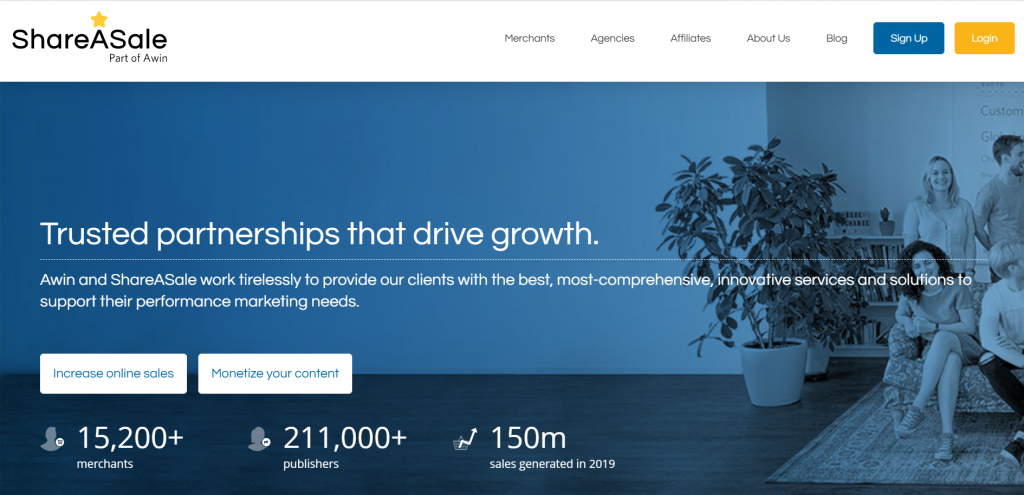





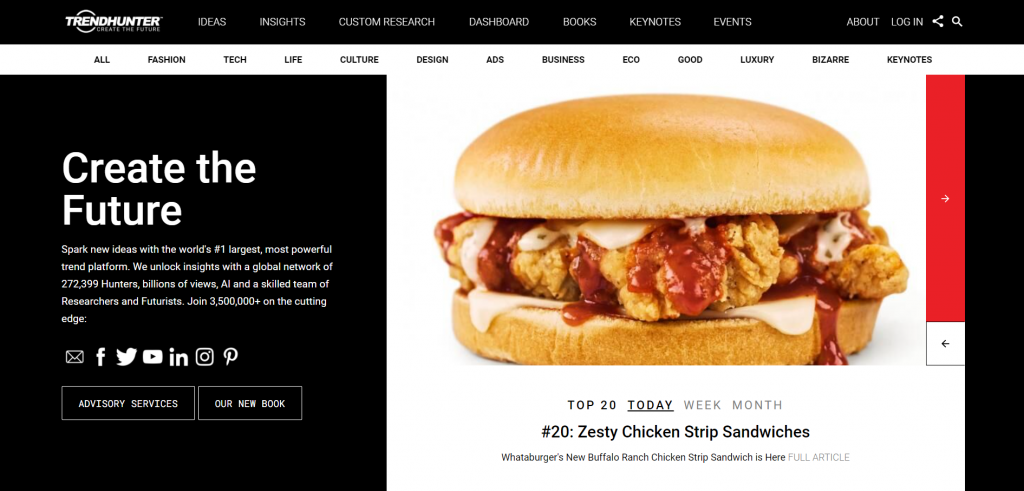
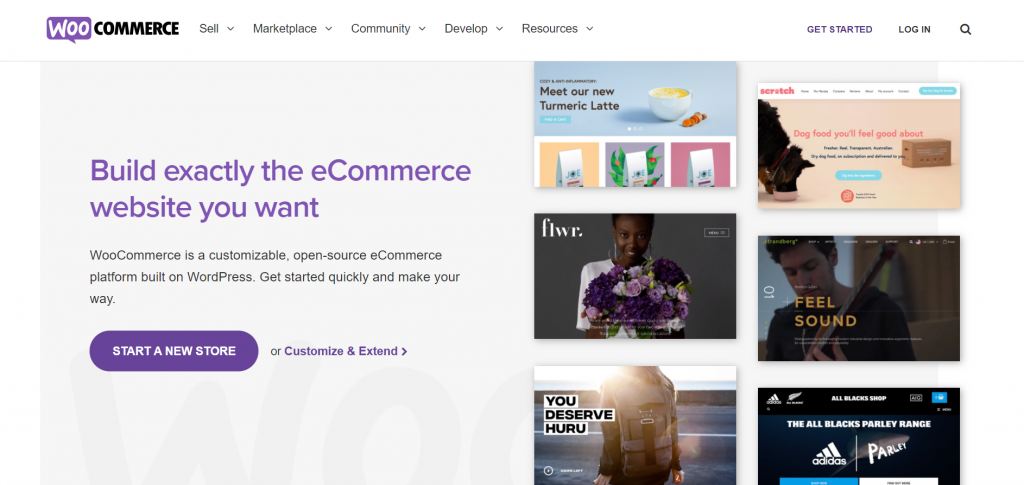
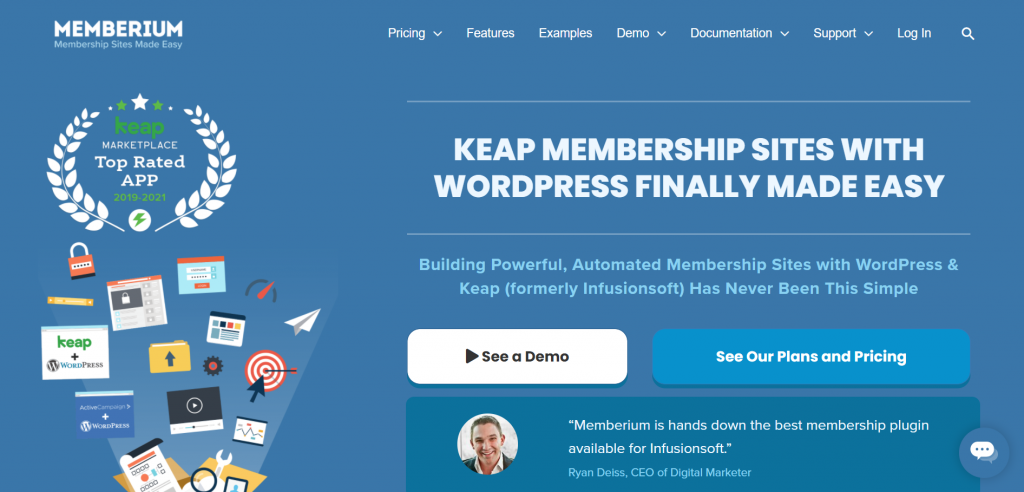
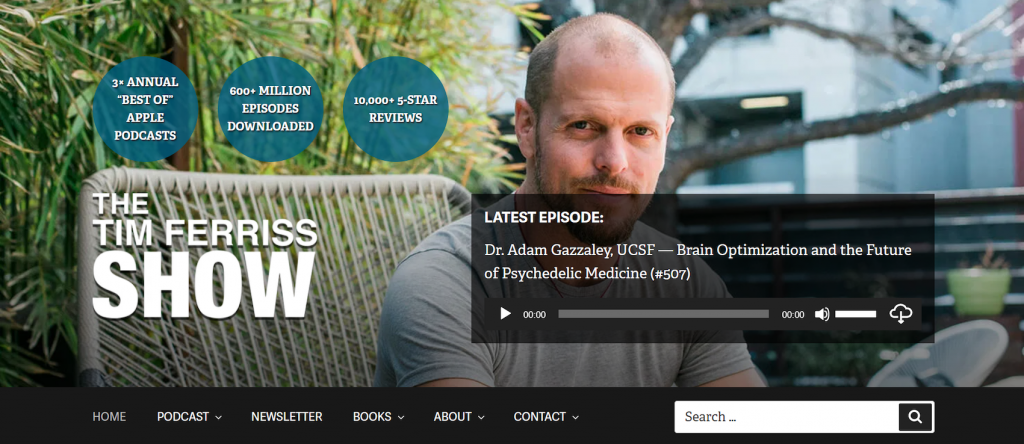

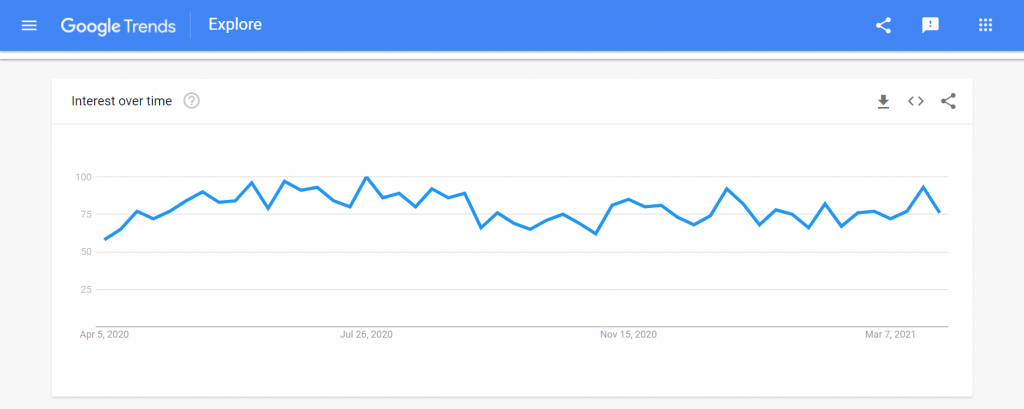
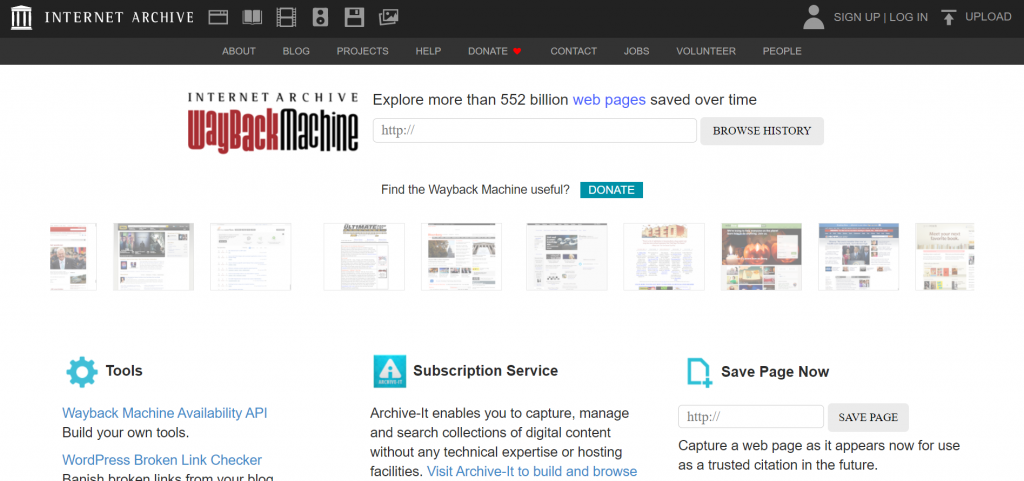
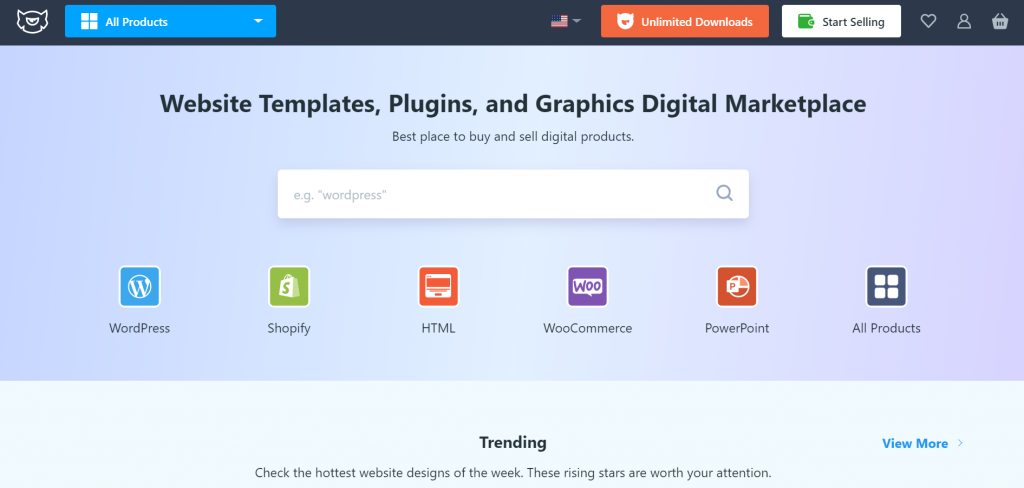
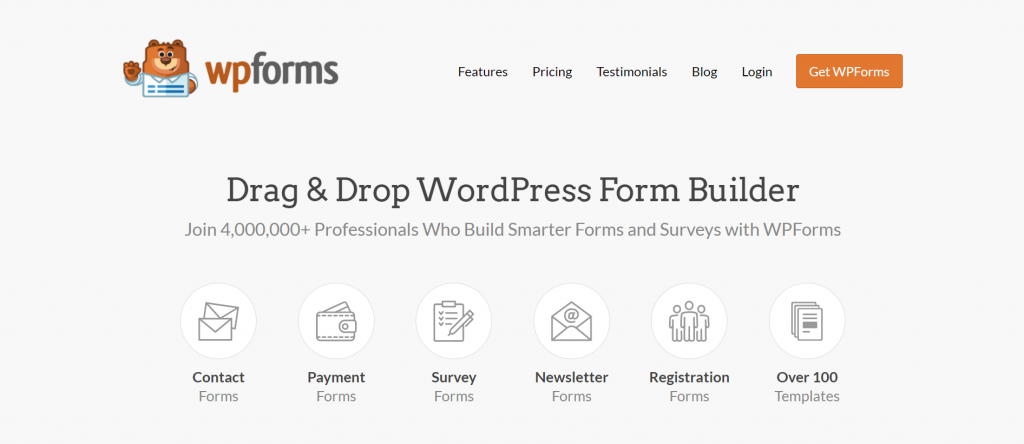

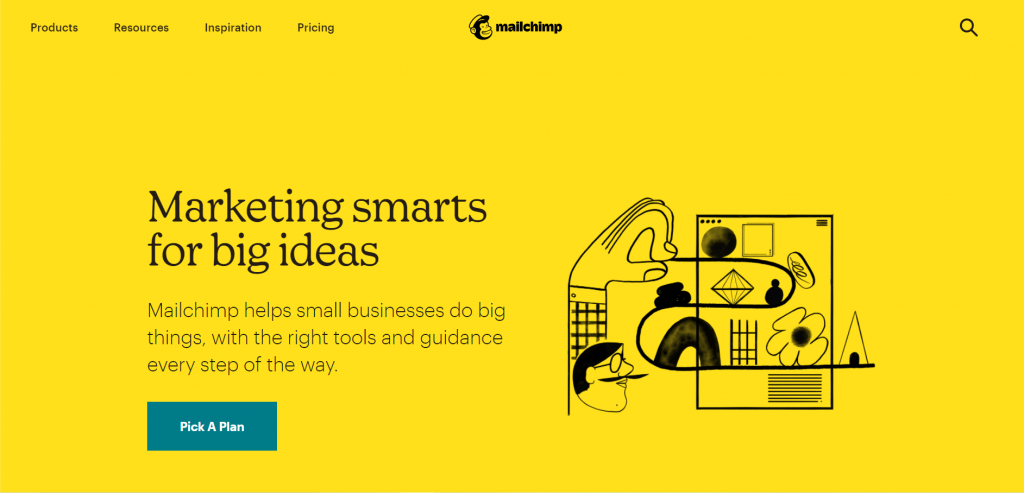
Leave a Reply